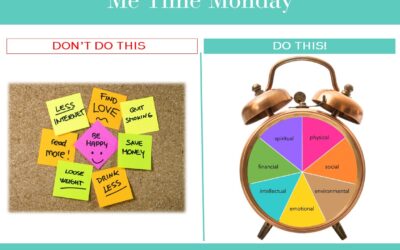 When it comes to caregiving, staying fit so that you have the energy to care for your loved one is like training for an Olympic marathon not a sprint. Even though your caregiving race may begin with a crisis event, very often it lasts far longer than you may anticipate – not days but weeks, months, years. According to the National Alliance for Caregiving, caregivers spend on average 4.6 years caring for a loved one with 15 percent spending more than 10 years. A world-class runner who can finish the 100-yard dash in 9.1 seconds cannot keep up that pace for 26 miles – it is simply impossible.
When it comes to caregiving, staying fit so that you have the energy to care for your loved one is like training for an Olympic marathon not a sprint. Even though your caregiving race may begin with a crisis event, very often it lasts far longer than you may anticipate – not days but weeks, months, years. According to the National Alliance for Caregiving, caregivers spend on average 4.6 years caring for a loved one with 15 percent spending more than 10 years. A world-class runner who can finish the 100-yard dash in 9.1 seconds cannot keep up that pace for 26 miles – it is simply impossible.
Although caregiving may leave you exhausted and without any time to get to the gym or exercise on your own, you have to find ways to get some type of physical exercise into your daily and weekly routine. Ask a friend or neighbor to give you a break or create an online community where friends and family volunteers can help lighten your load so you can squeeze in some “fitness time.” Staying physically fit actually gives you more energy for caregiving and finding these minutes for your body health improves your mental health as well. It is a 1-2 punch that will help you banish the burn-out and stress that so many caregivers face.
Taking our cue from the 2012 Olympic athletes, here are 5 ways you can “train” for just a few minutes a day so that you have the energy to keep going as a caregiver:
 Stretch – Offering a whole host of physical benefits such as improving your flexibility, circulation, alleviating lower back pain and lowering your blood pressure, stretching also helps your balance and coordination. Make sure you go slow and don’t overdo it – there is no gain in pain. Check out The Stretching Handbook for ways to adopt 10 minutes of safe, easy stretches into your daily routine and watch Team USA Dawn Harper “stretch” for her second gold medal in the 100mm hurdles.
Stretch – Offering a whole host of physical benefits such as improving your flexibility, circulation, alleviating lower back pain and lowering your blood pressure, stretching also helps your balance and coordination. Make sure you go slow and don’t overdo it – there is no gain in pain. Check out The Stretching Handbook for ways to adopt 10 minutes of safe, easy stretches into your daily routine and watch Team USA Dawn Harper “stretch” for her second gold medal in the 100mm hurdles.
 Lift – You don’t have to be able to lift as much as Team USA weightlifter Sara Robles to help build strong bones and muscles. According to the National Center for Health Statistics, every year we lose 1 percent of our bone and muscle mass. Lifting light weights (2-5 pounds) will not only help prevent osteoporosis as you age but also boosts your energy levels and improves your mood. If you don’t own weights or have a gym membership, you can lift soup cans or do isometric exercises like lunges and squats in your own living room.
Lift – You don’t have to be able to lift as much as Team USA weightlifter Sara Robles to help build strong bones and muscles. According to the National Center for Health Statistics, every year we lose 1 percent of our bone and muscle mass. Lifting light weights (2-5 pounds) will not only help prevent osteoporosis as you age but also boosts your energy levels and improves your mood. If you don’t own weights or have a gym membership, you can lift soup cans or do isometric exercises like lunges and squats in your own living room.
 Core Strength/Dance – The U.S. Women’s Gymnastics team is expected to take team gold at the London Olympic Games – and core strength is what they are all about. One of my favorite gymnastics events is floor exercise because it combines dance with strength and balance. Dancing makes you strive to achieve full range of motion for all the major muscle groups, it improves strength by forcing the muscles to resist against a dancer’s own body weight, it increases your endurance because your muscles have to work hard for increasingly longer periods of time without fatigue, and it elevates the heart rate which increases stamina. You can dance solo at home to music or take a class at a gym or community center. The latest craze is called Zumba – a Latin-inspired dance “fitness party” that encourages you to be social as well as get physical. Studies have shown that strong social ties and socializing with friends contribute to high self-esteem and a better sense of well-being.
Core Strength/Dance – The U.S. Women’s Gymnastics team is expected to take team gold at the London Olympic Games – and core strength is what they are all about. One of my favorite gymnastics events is floor exercise because it combines dance with strength and balance. Dancing makes you strive to achieve full range of motion for all the major muscle groups, it improves strength by forcing the muscles to resist against a dancer’s own body weight, it increases your endurance because your muscles have to work hard for increasingly longer periods of time without fatigue, and it elevates the heart rate which increases stamina. You can dance solo at home to music or take a class at a gym or community center. The latest craze is called Zumba – a Latin-inspired dance “fitness party” that encourages you to be social as well as get physical. Studies have shown that strong social ties and socializing with friends contribute to high self-esteem and a better sense of well-being.
 Swim – Hydro-exercise requires a pool but it can be an extremely effective way of exercising that tones your whole body. It is a low impact way to move all your major muscles where the buoyancy of the water helps you avoid stress and strain on joints and limbs. The water also helps you improve your balance. Just close your eyes and think of being in the pool next to 2012 Olympic Gold Medal winner Ryan Lochte – hand me my bathing suit!
Swim – Hydro-exercise requires a pool but it can be an extremely effective way of exercising that tones your whole body. It is a low impact way to move all your major muscles where the buoyancy of the water helps you avoid stress and strain on joints and limbs. The water also helps you improve your balance. Just close your eyes and think of being in the pool next to 2012 Olympic Gold Medal winner Ryan Lochte – hand me my bathing suit!
 Breathe/Focus/Relax – There are many things which set Olympians apart from the rest of us and one of those things is their ability to focus, relax and create calm around them to go for the gold. This is not an easy task but one that can be mastered by anyone. Meditation research pioneer Dr. Herbert Benson, founder of the Mind/Body Institute at Massachusetts General Hospital in Boston and author of The Relaxation Response, prescribes doing the following twice daily:
Breathe/Focus/Relax – There are many things which set Olympians apart from the rest of us and one of those things is their ability to focus, relax and create calm around them to go for the gold. This is not an easy task but one that can be mastered by anyone. Meditation research pioneer Dr. Herbert Benson, founder of the Mind/Body Institute at Massachusetts General Hospital in Boston and author of The Relaxation Response, prescribes doing the following twice daily:
- Choose a word, sound, short phrase or prayer that you repeat continuously for 10-20 minutes.
- Sit still and comfortably.
- Close your eyes and relax your muscles.
- Focus your attention on your breathing, simply observing the in-and-out breaths.
- Begin repeating your word.
- As other thoughts may enter your stress-filled mind, don’t force them away or become annoyed, simply, gently ignore them and continue your repetitive word or phrase.
What Dr. Benson found is that this simple exercise when done daily can help with a host of health issues including fatigue, hypertension, asthma, constipation, infertility, insomnia, rheumatoid arthritis, chest pain, allergies, allergic skin reactions and more. You should notice improvement in your health and stress levels in less than one month.
When it comes to caregiving, by adopting some Olympic fitness habits into your routine, you too can be a winner.





It’s fantastic to see caregivers uk getting the recognition they deserve.